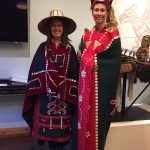The above image is a word cloud I created using the most important terms and themes found throughout my entries.
Journal entry #10 – Capstone summary
*I’ve written parts of this entry in bullet points. As I was examining my old journal entries I wanted to take snippets of what I was thinking at the time and examined on those ideas*
Going through my old PE journal entries, it is amazing to see how much I have learned in just a few short months. Each week my head has been filled with ideas about how we can make PE classes fun and engaging for students. I hope I can carry this excitement and positivity about physically activity and health education long into my future as an educator.
Some of the major themes throughout my journal entries have been:
- That there are numerous ways to promote a healthy lifestyle for students (i.e. dance, yoga, creating games). These activities can benefit students in more than just a physical way, for example their socio-emotional learning, individual expression and teamwork skills. PE is naturally holistic, it incorporates more than just movement and physicality. As good educators we must see this power and harness it.
- Teachers play an integral role in creating, planning and leading classes that will engage students. Without an engaging lesson, your students are sure to lose interest quickly.
- Teachers are role models for their students and must strive to create a classroom environment that encourages healthy active living. Because PHE is a skill that students will use for their entire life, as teachers we need to remember how important we are in facilitating this journey.
- My memories, both bad and good, of doing PE throughout my childhood and how this shaped my own perceptions of health and physical literacy.
I think being a great PHE educator involves:
- curiosity: Teachers are always looking for new ideas and always trying to improve your own practice. The ability and desire to try new things and experiment with what you already know.
- creativity: Like incorporating DPA into your non-PE classes in the form of brain breaks, stretching sessions and movement games. PE is not limited to playing sports in the gym – go outside, use the classroom, think beyond the usual.
- positivity: So you can support your students and make them feel safe to learn and take risks. We must change the negative stigma that PE class have traditionally carried.
- energy: To motivate students and get them excited about doing PE and learning about their bodies.
- excitement: To try out new things in your classroom and use new ideas to promote a healthy lifestyle.
- connection: A connection to your students is twofold. On one hand it means that they trust you and on the other that you have the closeness to learn about their abilities and likes.
Above all, ‘education is not the filling of a pail but the lighting of a fire’ (William Butler Yeats) and as teachers we have a responsibility to keep this fire burning in the hearts of our students. To do this we must engage their curiosity and create an excitement that will keep them moving forward. Moreover, we must remember that we as educators need to keep our own fire alive and keep look for ways to improve our practice.






stevemcg
December 1, 2016 — 2:37 pm
Thanks for sharing!